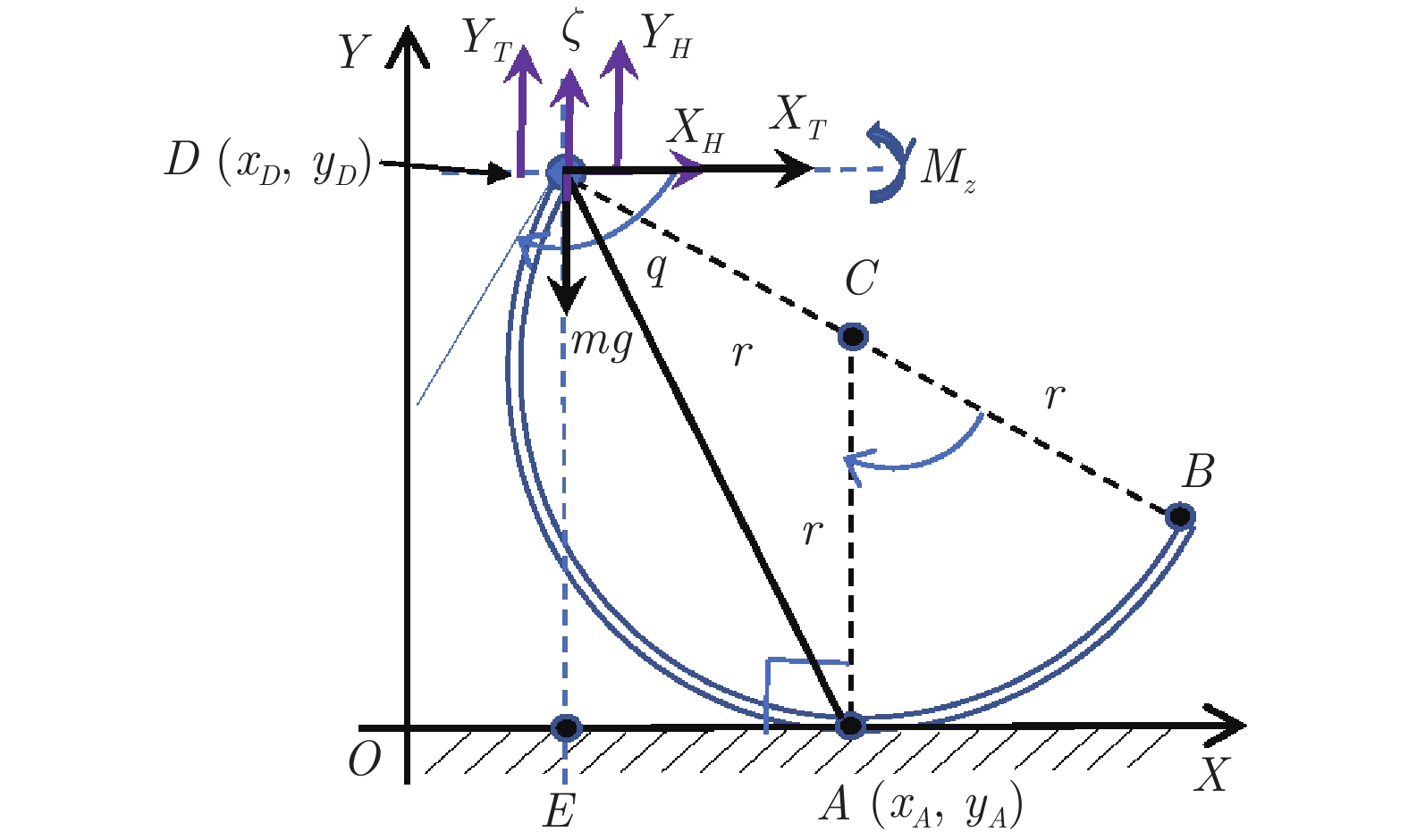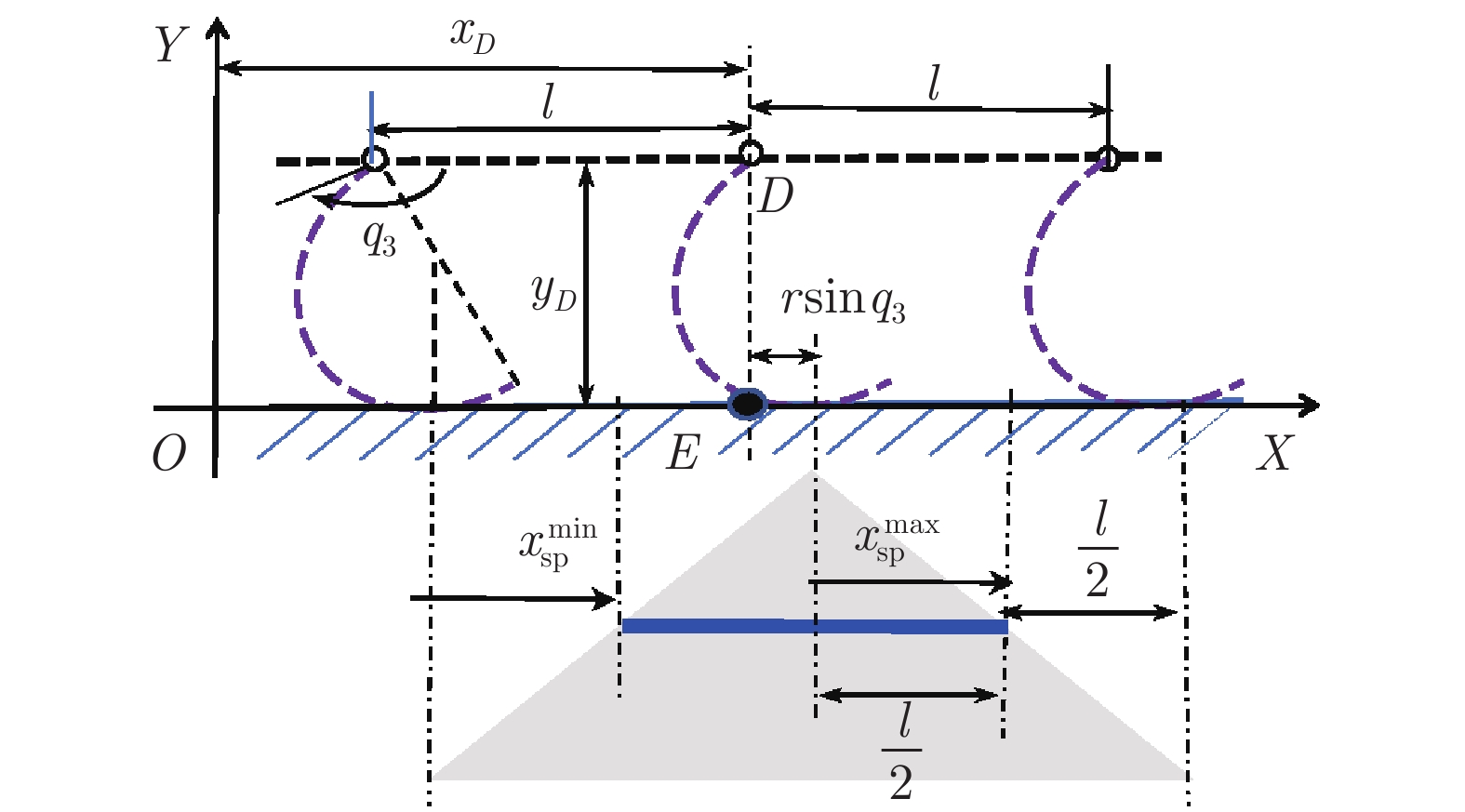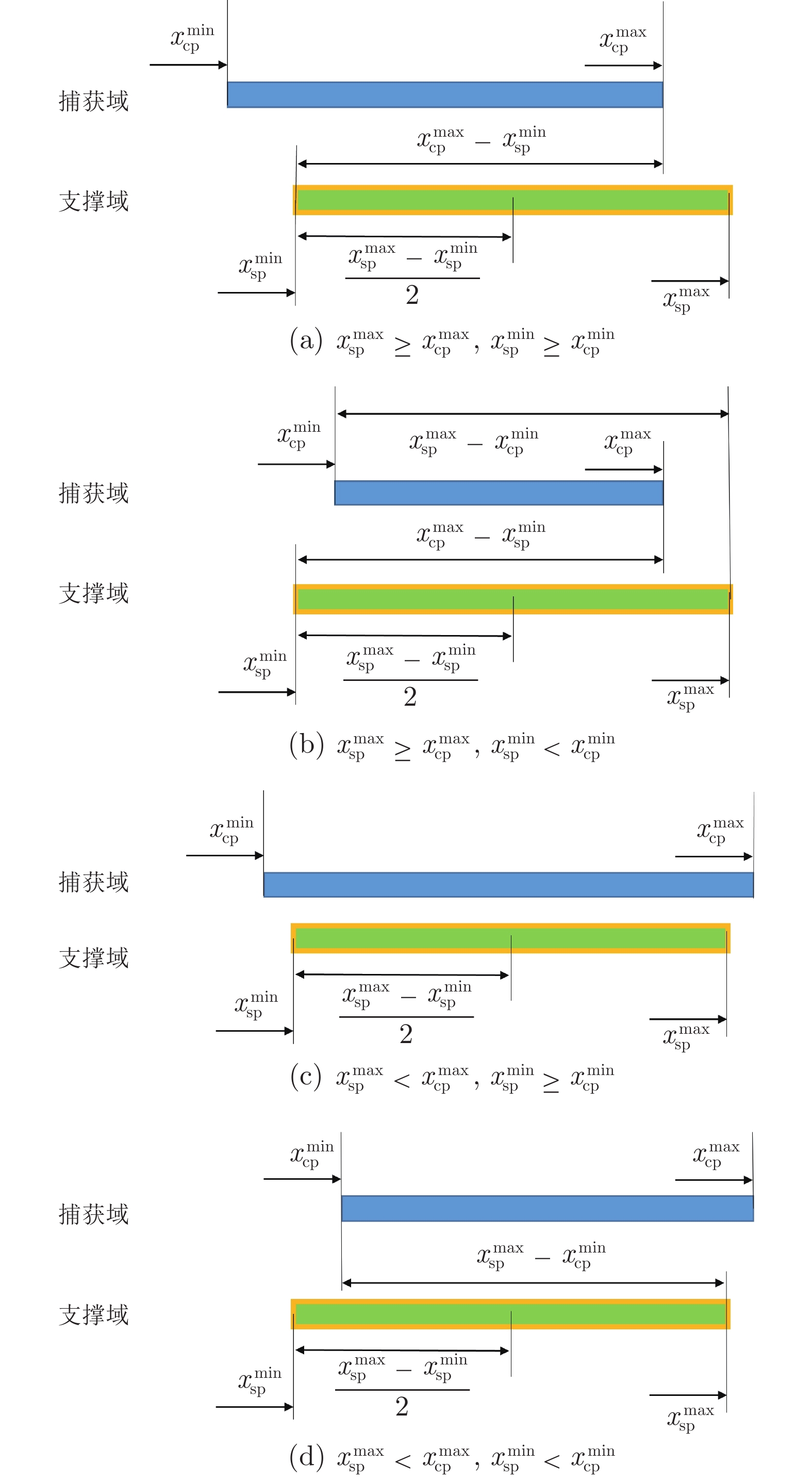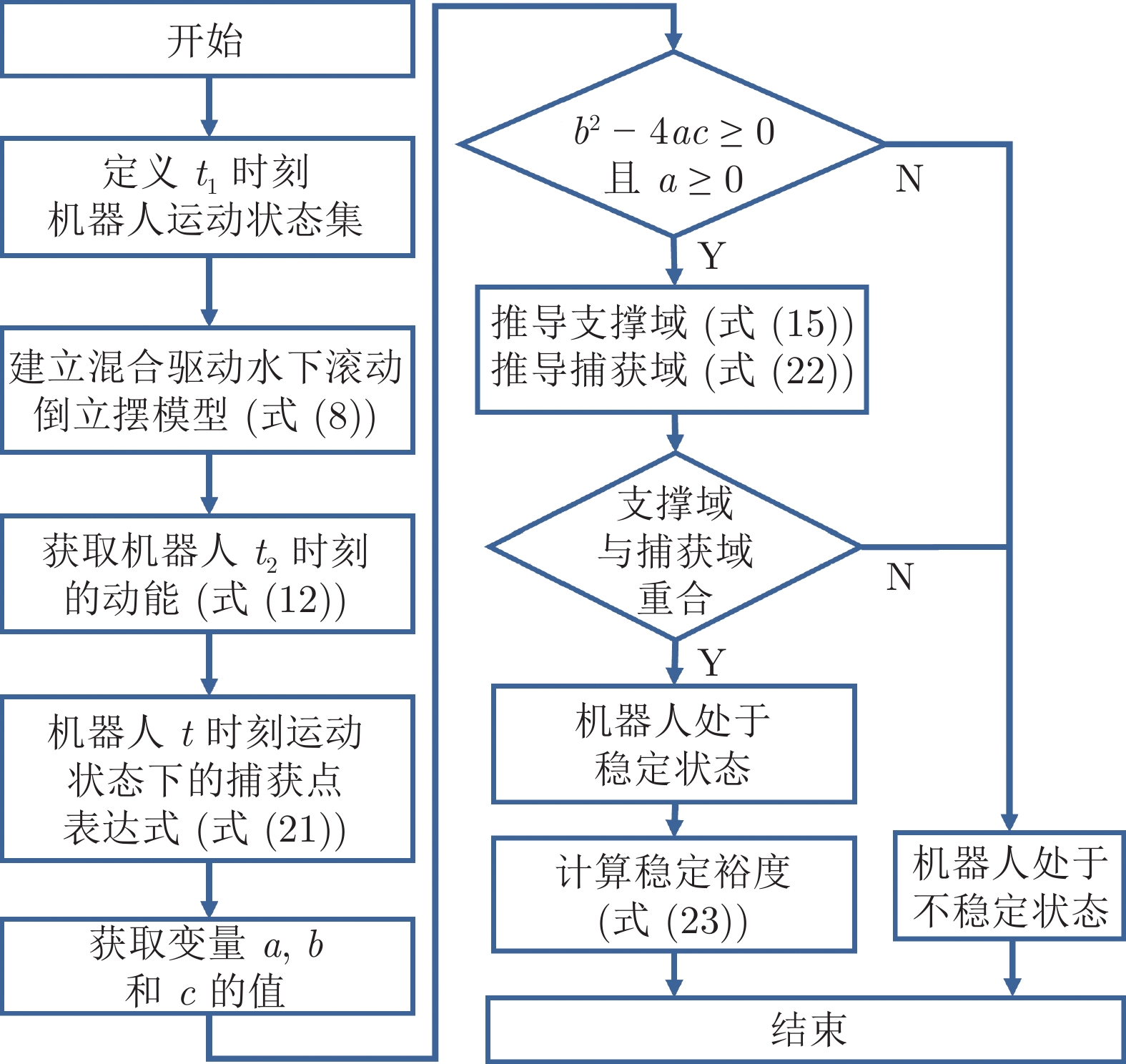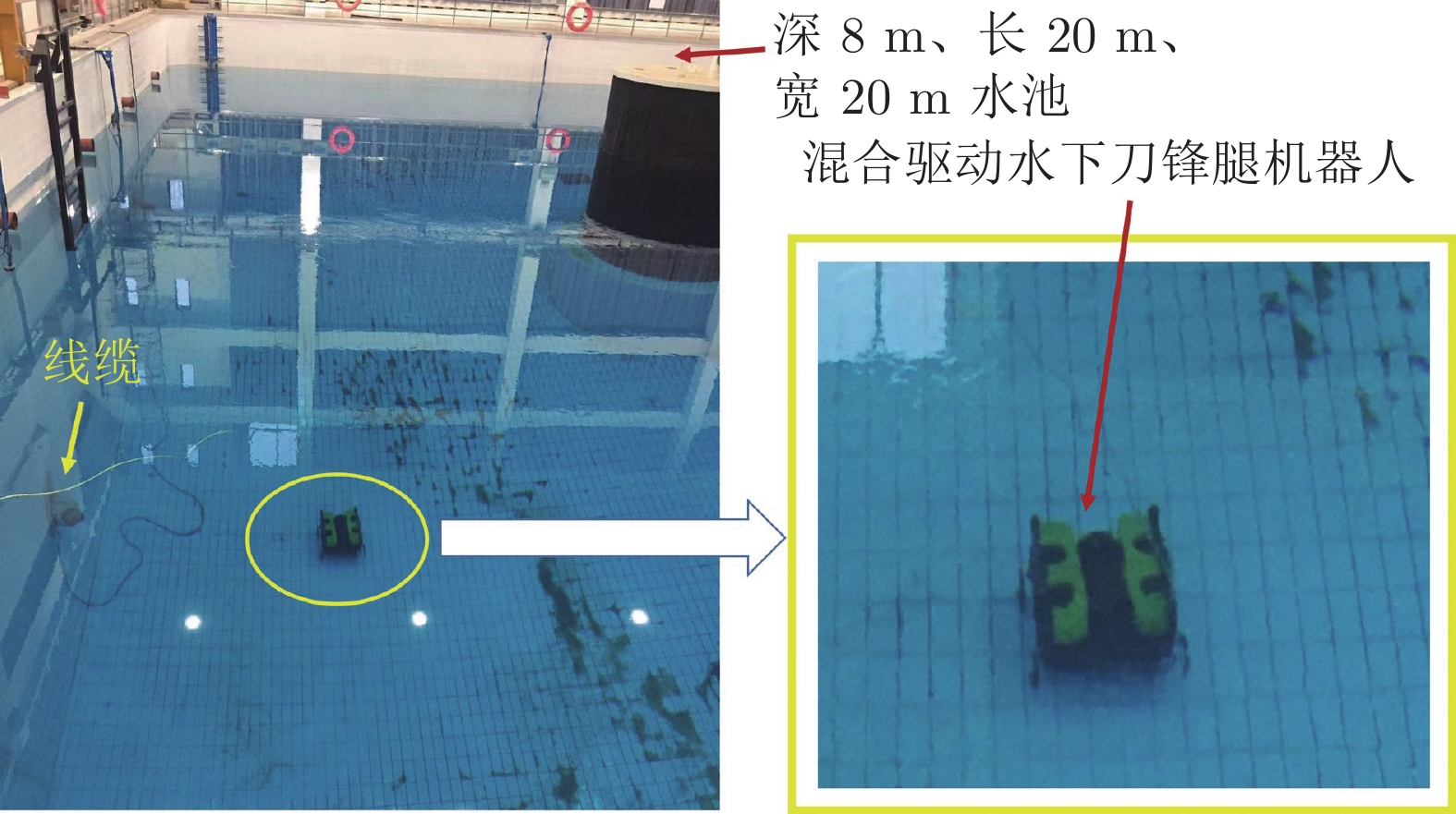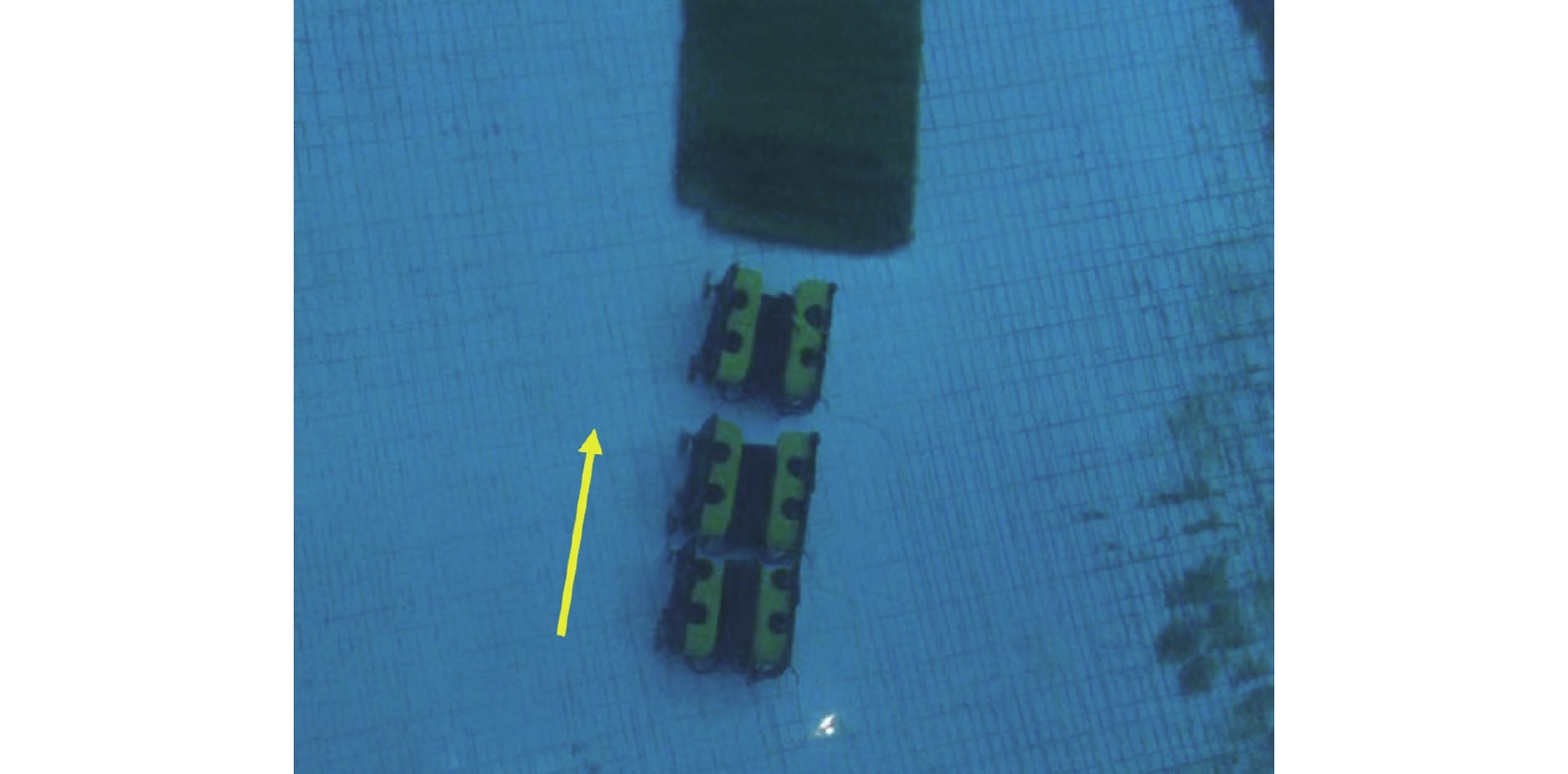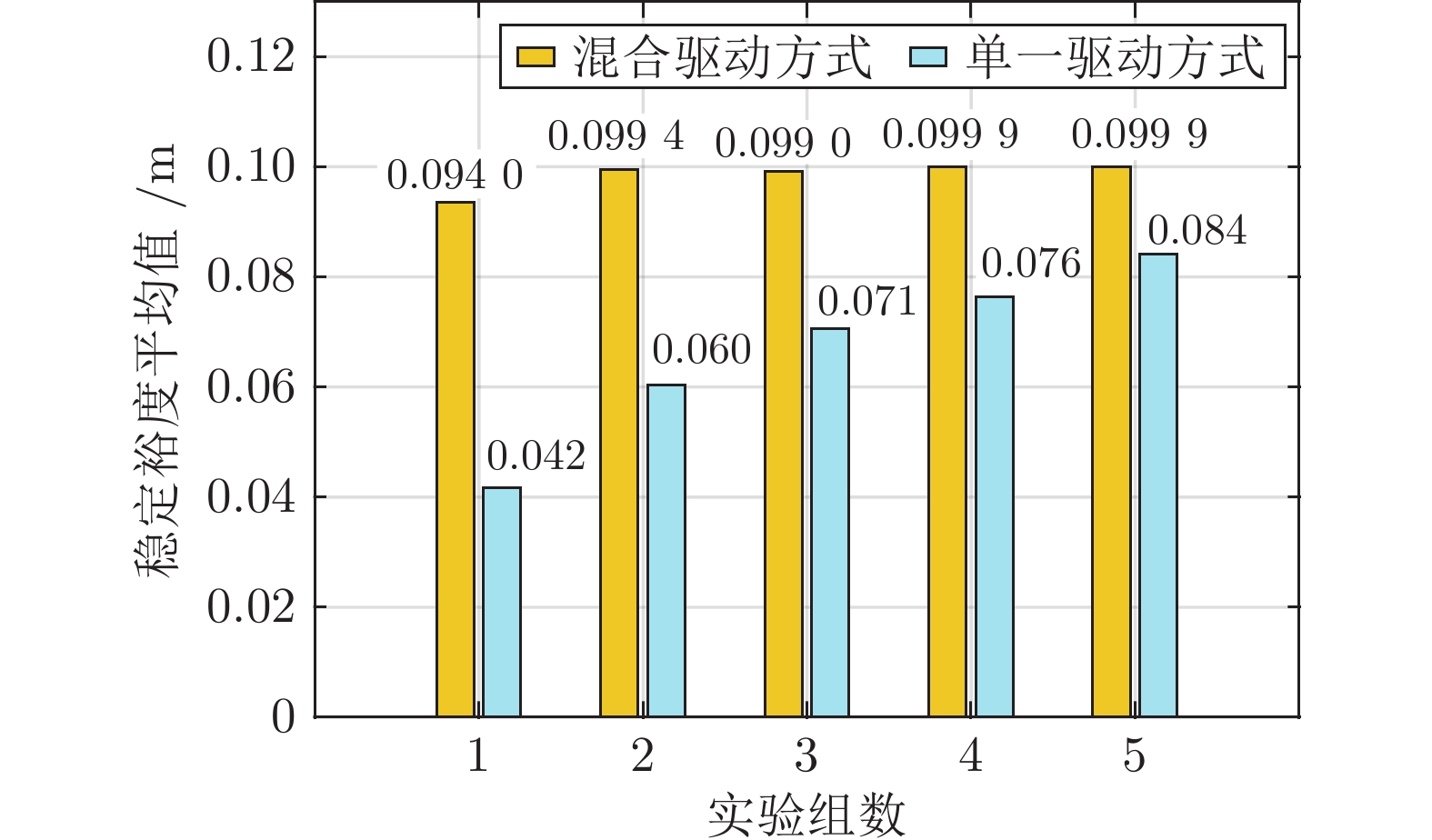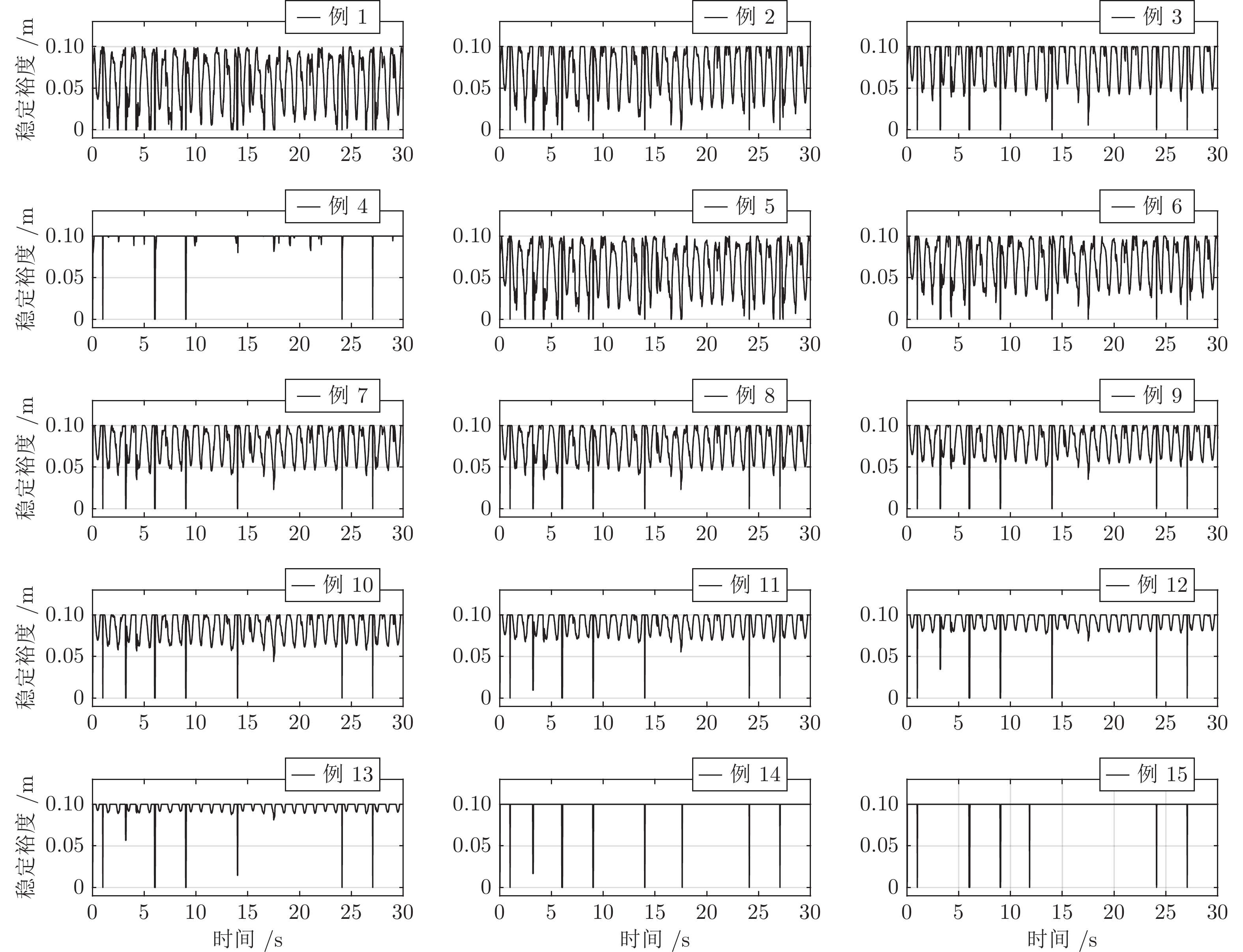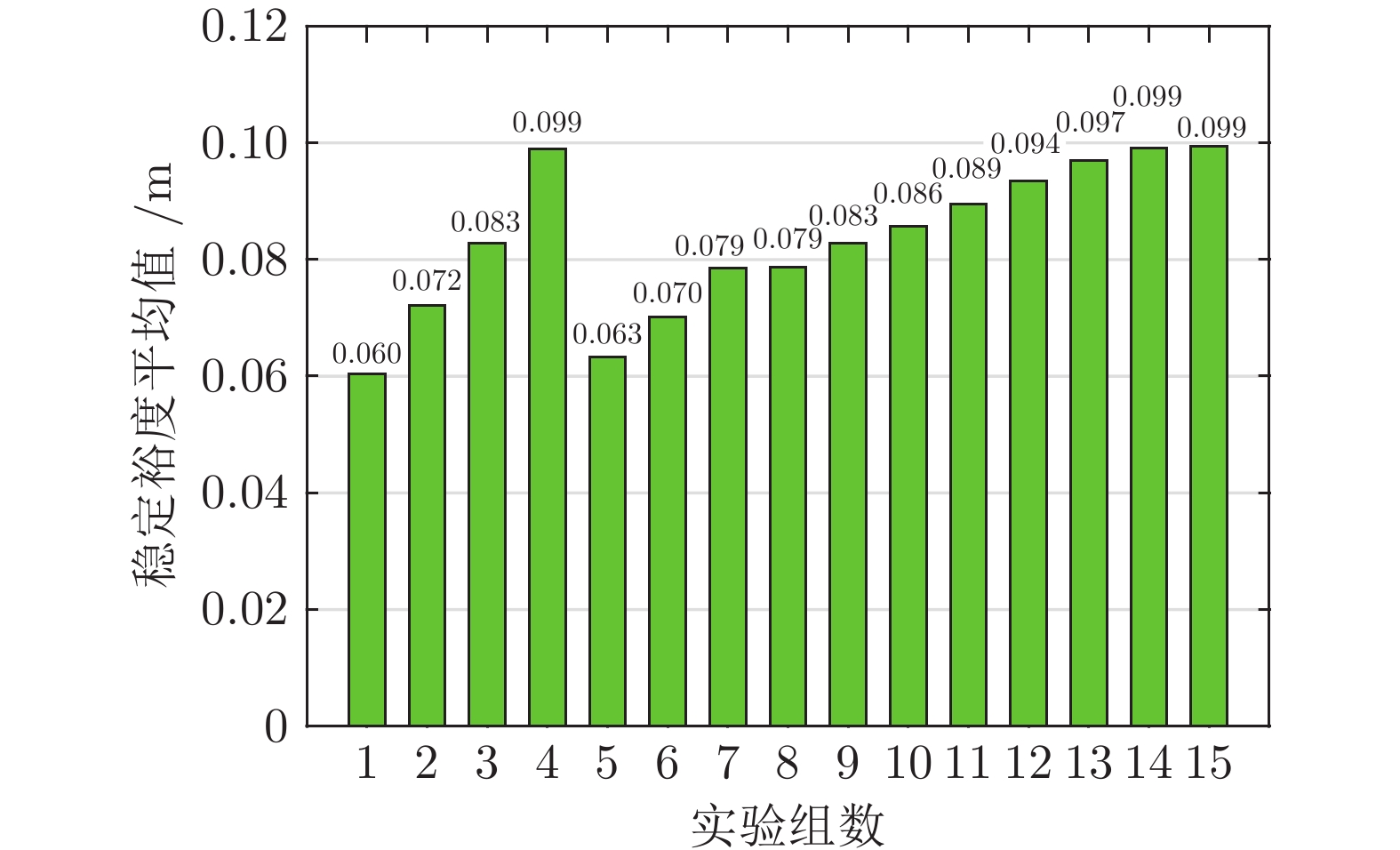A Stability Criterion for Hybrid-driven Underwater Bladed Legged Robot Based on Capture Point Theory
-
摘要: 由8个推进器和6条刀锋腿混合驱动的水下机器人可在水底或水下结构物表面上行走. 所提方法旨在研究这类机器人运动稳定性的评判准则, 即稳定性判据. 现有的稳定性判据多集中于同一机构(腿)驱动的陆地机器人, 未涉及混合驱动的水下刀锋腿机器人. 针对该问题, 提出了基于捕获点理论的混合驱动水下刀锋腿机器人稳定性判据. 首先, 在建立混合驱动水下滚动倒立摆模型的基础上, 利用机器人运动状态预测摆动腿和支撑腿切换瞬间机器人的动能; 然后, 根据推进器所能提供的推力范围, 计算迫使机器人静止的捕获点变化范围, 即获取捕获域; 最后, 根据捕获域与支撑域的空间关系, 判断机器人是否稳定, 并计算机器人的稳定裕度. 水下实验结果表明, 所提出的稳定性判据具有较好的充要性和普适性.Abstract: The underwater bladed legged robot hybrid-driven by 8 thrusters and 6 blade legs can walk on seafloor and the surface of underwater structure. This paper aims at investigating the evaluation criteria of the motion stability of this kind of robot, where the evaluation criteria is called as stability criterion. The existing stability criterions mainly focus on the robot that is driven by single mechanisms (legs), and not consider the hybrid-driven underwater bladed legged robot. Using capture point theory, we propose a stability criterion for hybrid-driven underwater bladed legged robot. Firstly, a hybrid-driven rolling inverted pendulum model that can reflect the dynamic characteristics of the robot is proposed, and the kinetic energy of the robot that the swinging legs are just touching the ground is predicted. Then, according to the maximum and minimum thrusts of the thrusters, we calculate the variation range of the expected capture point that can enforce the kinetic energy of the robot becoming zero, and the variation range is called as capture domain. Finally, the spatial relationship between the capture domain and the support domain can be employed to judge whether the robot is stable, and calculate the stability margin of the robot. Underwater experimental results show that the proposed stability criterion has better sufficiency and universality.
-
表 1 15组实验中推力上下界(N)
Table 1 Upper and lower bounds of thrust in 15 groups of experiments (N)
实例 垂向推进器
推力上界垂向推进器
推力下界水平推进器
推力上界水平推进器
推力下界1 −10 −10 0 0 2 −10 −10 1 −1 3 −10 −10 2 −2 4 −10 −10 5 −5 5 −9 −11 0 0 6 −6 −14 0 0 7 0 −20 0 0 8 30 −20 0 0 9 30 −25 0 0 10 30 −30 0 0 11 30 −40 0 0 12 30 −60 0 0 13 30 −100 0 0 14 30 −30 5 −5 15 30 −30 30 −30 -
[1] Ma F, Yan W, Chen L, Cui R. CPG-based motion planning of hybrid underwater hexapod robot for wall climbing and transition. IEEE Robotics and Automation Letters, 2022, 7(4): 12299−12306 doi: 10.1109/LRA.2022.3216233 [2] 陈恳, 付成龙. 仿人机器人理论与技术. 清华大学出版社, 2010. 56−64Chen Ken, Fu Cheng-Long. Humanoid Robot Theory and Technology. Beijing: Tsinghua University Press, 2010. 56−64 [3] 田彦涛, 孙中波, 李宏扬, 王静. 动态双足机器人的控制与优化研究进展. 自动化学报, 2016, 42(8): 1142−1157 doi: 10.16383/j.aas.2016.c150821Tian Yan-Tao, Sun Zhong-Bo, Li Hong-Yang, Wang Jing. A review of optimal and control strategies for dynamic walking bipedal robots. Acta Automatica Sinica, 2016, 42(8): 1142−1157 doi: 10.16383/j.aas.2016.c150821 [4] Hu C J, Huang C K, Lin P C. A torque-actuated dissipative spring loaded inverted pendulum model with rolling contact and its use as the template for design and dynamic behavior generation on a hexapod robot. In: Proceedings of the IEEE International Conference on Robotics and Automation (ICRA). Seattle, Washington, USA: IEEE, 2015. 5177−5183 [5] Lu W, Yu M, Lin P. Clock-torqued rolling SLIP model and its application to variable-speed running in a hexapod robot. IEEE Transactions on Robotics, 2018, 34(6): 1643−1650 doi: 10.1109/TRO.2018.2862903 [6] Calisti M, Laschi C. Morphological and control criteria for self-stable underwater hopping. Bioinspiration and Biomimetics, 2018, 13: Article No. 016001 [7] Picardi G, Lovecchio R, Calisti M. Towards autonomous area inspection with a bio-inspired underwater legged robot. In: Proceedings of the IEEE/RSJ International Conference on Intelligent Robots and Systems (IROS). Prague, Czech Republic: IEEE, 2021. 930−935 [8] Vukobratovi M, Borovac B. Zero-moment point-thirty five years of its life. International Journal of Humanoid Robotics, 2004, 1(1): 157−173 doi: 10.1142/S0219843604000083 [9] Guckenheimer J, Holmes P. Nonlinear oscillations, dynamical systems, and bifurcations of vector fields. Springer Science and Business Media, 2013. 8−32 [10] Grizzle J W, Abba G, Plestan F. Asymptotically stable walking for biped robots: Analysis via systems with impulse effects. IEEE Transactions on Automatic Control, 2001, 46(1): 51−64 doi: 10.1109/9.898695 [11] Fu C, Chen K. Section-map stability criterion for biped robots part I: Theory. In: Proceedings of the IEEE International Conference on Mechatronics and Automation (ICMA). Harbin, China: IEEE, 2007. 1529−1534 [12] Hirukawa H, Hattori S, Harada K, Kajita S, Kaneko K, Kanehiro F, et al. A universal stability criterion of the foot contact of legged robots-adios ZMP. In: Proceedings of the IEEE International Conference on Robotics and Automation (ICRA). Orlando, USA: IEEE, 2006. 1976−1983 [13] Harada K, Kajita S, Kaneko K, Hirukawa H. Dynamics and balance of a humanoid robot during manipulation tasks. IEEE Transactions on Robotics, 2006, 22(3): 568−575 doi: 10.1109/TRO.2006.870649 [14] Audren H, Kheddar A. 3-D robust stability polyhedron in multicontact. IEEE Transactions on Robotics, 2018, 34(2): 388−403 doi: 10.1109/TRO.2022.3186804 [15] Jenelten F, Grandia R, Farshidian F, Hutter M. TAMOLS: Terrain-aware motion optimization for legged systems. IEEE Transactions on Robotics, 2022, 38(6): 3395−3413 doi: 10.1109/TRO.2017.2786683 [16] Winkler W, Farshidian F, Pardo D, Neunert M, Buchli J. Fast trajectory optimization for legged robots using vertex-based zmp constraints. IEEE Robotics and Automation Letters, 2017, 2(4): 2201−2208 doi: 10.1109/LRA.2017.2723931 [17] Viragh Y, Bjelonic M, Bellicoso C, Jenelten F, Hutter M. Trajectory optimization for wheeled-legged quadrupedal robots using linearized zmp constraints. IEEE Robotics and Automation Letters, 2019, 4(2): 1633−1640 doi: 10.1109/LRA.2019.2896721 [18] Pratt J, Koolen T, Boer T, Rebula J, Cotton S, Carff J, et al. Capturability-based analysis and control of legged locomotion, Part 2: Application to M2V2, a lower-body humanoid. The International Journal of Robotics Research, 2012, 31(10): 1117−1133 doi: 10.1177/0278364912452762 [19] 刘飞, 陈小平. 基于轨道能量模型的步行机器人平衡恢复方法. 机器人, 2011, 33(2): 244−250 doi: 10.3724/SP.J.1218.2011.00244Liu Fei, Chen Xiao-Ping. Balance recovery method of walking robot based on orbital energy model. ROBOT, 2011, 33(2): 244−250 doi: 10.3724/SP.J.1218.2011.00244 [20] Liu J, Chen H, Wensing P M, Zhang W. Instantaneous capture input for balancing the variable height inverted pendulum. IEEE Robotics and Automation Letters, 2021, 6(4): 7421−7428 doi: 10.1109/LRA.2021.3097074 [21] Caron S, Escande A, Lanari L, Mallein B. Capturability-based pattern generation for walking with variable height. IEEE Transactions on Robotics, 2019, 36(2): 517−536 [22] Koolen T, De Boer T, Rebula J, Goswami A, Pratt J. Capturability-based analysis and control of legged locomotion, Part 1: Theory and application to three simple gait models. The International Journal of Robotics Research, 2012, 31(9): 1094−1113 doi: 10.1177/0278364912452673 [23] Liu J, Chen H, Wensing P M, Zhang W. Quadruped capturability and push recovery via a switched-systems characterization of dynamic balance. IEEE Transactions on Robotics, 2023, 39(3): 2111−2130 doi: 10.1109/TRO.2023.3240622 [24] 严卫生, 陈乐鹏, 崔荣鑫, 许晖, 张守旭, 马飞宇. 一种水下机器人定向和稳定行走方法, 中国专利, ZL202110837326.X, 2022-11-22Yan Wei-Sheng, Chen Le-Peng, Cui Rong-Xin, Xu Hui, Zhang Shou-Xu, Ma Fei-Yu. A Directional and Stable Walking Method for Underwater Robots, China Patent ZL202110837326.X, November 22, 2022 -





 下载:
下载:



